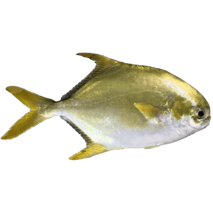Could pompano fish be safely imported from China to be consumed? As seafood markets continue to grow across the world there is a lot yet to be learned about the safety and risks of imports of fish. What are or should be some regulatory mechanisms in place to ensure pompano coming from China is safe? How can consumers take responsibility for ensuring their purchase of fish is safe? Let’s delve in for the answers to such questions and more that will help in making informed decisions on the consumption of pompano fish coming from China.
The pompano fishes imported from China can be consumed safely where proper precautions are undertaken. However, there remain a few key factors involved in driving safety whereby cognizance needs to be taken by the consumers themselves. The comprehensive analysis of the situation and guidelines that ensure safety comes herein.
There are also multitiered levels of oversight concerning Chinese pompano. What does this entail, and what functions does each layer have in making sure the fish are safe for eating purposes?

Chinese Regulatory Standards regarding Aquaculture Operations
There are several regulatory standards related to the quality and safety of fishery products produced from aquaculture in China: regarding water quality, feed standards, and disease control, though the effectiveness does vary among regions.
International Import Controls and Inspections
Import sea food is highly controlled and inspected by the importing countries. In that regard, the FDA (Food and Drug Administration) in the United States has certain requirements on the inspection of imported seafood whether they are safe for consumption or not.
Destination Country Safety Requirements
Each country has a set of requirements relating to the safety of seafood. These may relate to contaminant testing, verification of the absence of certain prohibited substances, and proper labeling.
Local Health Department Monitoring
The local health departments go a long way in monitoring the safety of the seafood sold locally. This they do through their routine inspections and issuance of advisories as per current safety data.

Known Concerns and Safeguards
There are a number of specific issues related to Chinese aquaculture. What are these, and what controls are being put in place to fix these problems?
Undeclared Antibiotic Use
Undeclared use of antibiotics in aquaculture production was realized historically in China. Use at such levels has created the potential for residue levels in the fish that pose a risk to consumers.
Environmental Pollution
It also affects the quality of water utilized in certain coastal areas of China. These could heavily contaminate the fish.
How the Safety Standards Are Enforced
But enforcement of the safety standards is variably implemented across the expanse of China. Some regions appear to be screwing up while others have slackened.
Safeguards in Place
Despite these, there are very significant safeguards against the safety of imported Chinese pompano:
- FDA Requirements for Inspection: FDA requirements make it binding that all imports of seafood products shall be subjected to at least minimum inspection for standards of safety.
- Compulsory Testing: It undergoes compulsory testing for banned substances and contaminants in its import.
- Supply Chain Verification: The supply chain is to be verified by documentation that the imported fish are sourced from reputed, certified producers.
- Regular Monitoring and Alerts: Concerned regulatory authorities periodically monitor the imported seafood and issue safety alerts in case of any detection of harmful effects.
Consumer Safety Guidelines
Accomplishing the safe consumption of Chinese pompano requires the following:
Purchase
- Purchase from Reputable Retailers: Buy fish from sellers whose supply chains are verified.
- Look for certification by a recognized organization such as MSC – Marine Stewardship Council; ASC – Aquaculture Stewardship Council.
- Freezing and Labeling: The fish should be well frozen, bearing distinct labels showing place of origin information and packaging dates.
Safety Verification
- FDA Alerts: Check the recent FDA alerts for the buyer or the import warnings.
- Advisories by local Health Departments: Pay attention to advisories issued.
- Check Credentials from your Supplier: The place needs to have credentials required by the state, besides offering tracking information.
Proper Handling and Cooking
- Store at Correct Temperatures: Refrigerate fresh fish below 40°F (4°C).
- Cook Adequately: Cook to at least 145°F (63°C).
- Follow Safe Food Handling Practices: Do not cross-contaminate by following safe food handling practices.

Risk Mitigation Strategies
To mitigate any of the possible risks in consuming pompano:
- Consider Alternative Sources: If one is concerned about Chinese imports, consider sourcing pompano elsewhere.
- –Research in Suppliers’ Reputation: Opt for a supplier with a safety and good record.
- Keep Informed: Pay attention to the latest current alerts to safety and advisories
- Do Proper Cooking and Proper Handling: Pay attention to proper cooking and handling practices
Conclusion
While Chinese pompano can be safely consumed, much of its safety greatly depends on proper sourcing, proper handling, and preparation. Consumers must decide in an informed way based on
- Current Safety Reports and Advisories: It contains the most recent available safety data and advisories. Selection of supplier is to be done with his verified credentials and certification.
- Supplier Reputation and Certifications: Choose suppliers with verified credentials and certifications.



